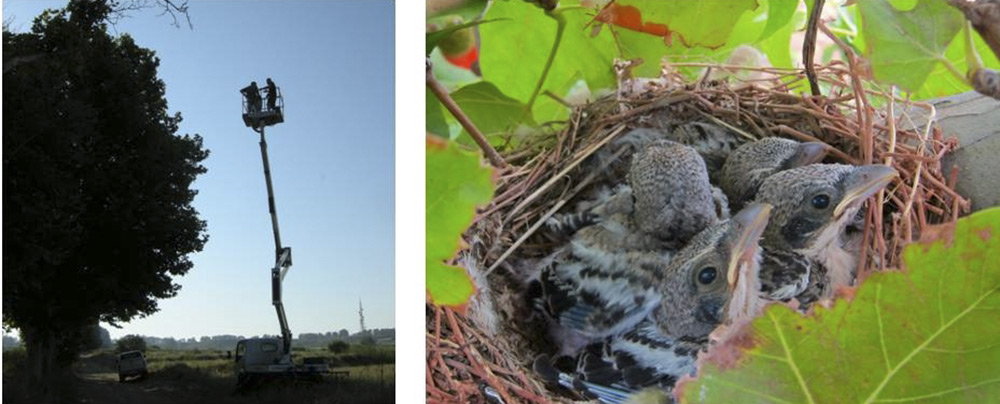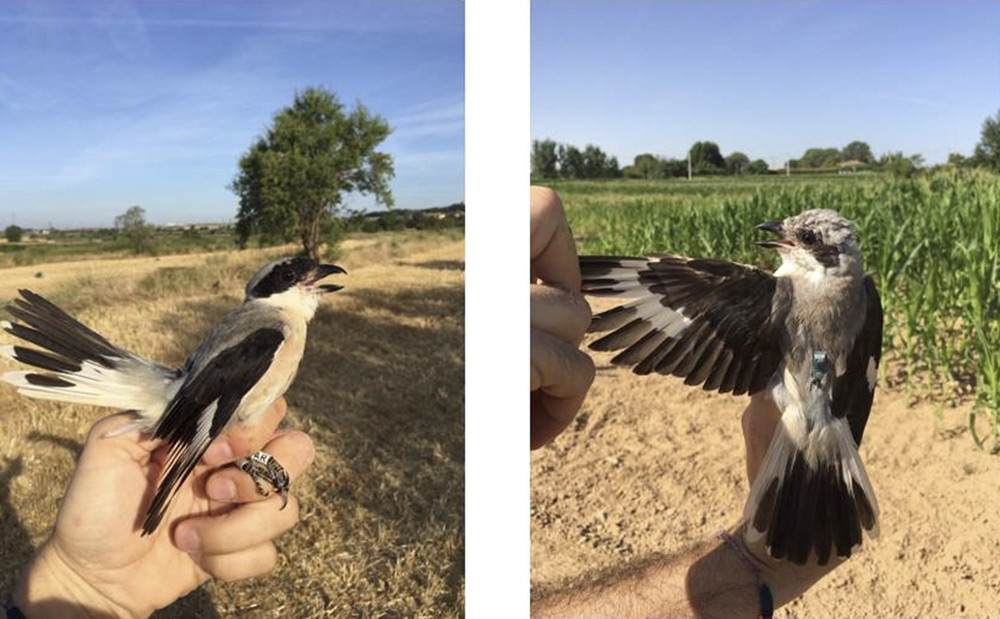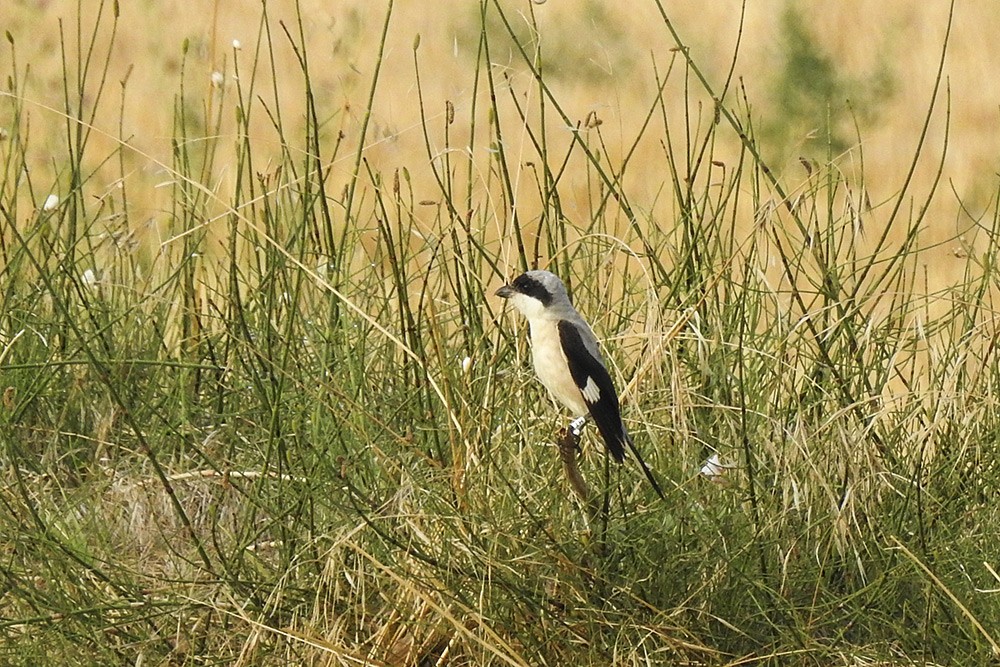The breeding season of the Lesser Grey Shrike in 2017 has undoubtedly been the best of the last 10 years in Spain: a minimum of 19 birds arrived in Lleida, the last breeding population in the whole Iberian peninsula.
17 of them were released in the framework of the Lesser Grey Shrike Conservation Project (14 in 2016, two in 2015 and one in 2014). Another two birds were born in the wild, also in Lleida, one in 2011 and the other one in 2016. The return rate has therefore been one of the highest since the beginning of the project in 2009, with 11.7%, higher than the overall average (8.4%). In addition, four Lesser Grey Shrikes were observed in other parts of Catalonia during spring-summer of 2017 all of them being migrants from other European populations.

Due to the strong bias of the sex ratio in favor of males (13 vs. 6), six breeding pairs have been formed. We would have to look back until 2007 to find a higher number of pairs. The sum of extreme environmental factors (storms) plus possible depredations of adults and chicks has caused the flight rate to be very low, only 1.3 chicks / couple(4 chicks in total).
Another milestone is the recovery of the old breeding center of Artesa-Castelldans, in the surroundings of the Channel of Urgell. One of the six couples has bred not far from where the last couples of this nucleus did it in 2009. Both birds of the pair were released in Alfés in 2016.

77 chicks born in captivity in The Lesser Grey Shrike Breeding Center (Vallcalent, Lleida) have been released at two points: Torreribera landstate and Alfés, both spaces under the protection of the Natura 2000 Network and with custody agreements signed between the owners and TRENCA NGO. Since the beginning of the releases in 2009, 470 Lesser Grey Shrike chicks have been released, of which a minimum of 33 individuals have returned (8.4%, n = 394).
For the third year in a row, 18 shrikes (6 adults and 12 chicks) have been tagged with data-loggers with the aim of studying the migration and knowing the possible causes of the decline outside our bounderies. Only one adult has returned wearing the geolocator, but it was not possible to retrap and download the data of the device.

TRENCA has been working for several years in the conservation of this species, through the protection of the last breeding pairs and the conservation of the breeding habitat as well as reinforcing the population thanks to an ambitious captive breeding project. This project is possible thanks to the collaboration of the Captive Breeding Center of Vallcalent (Lleida), run by the Catalan Government as well as the financial assistance of Fundación Biodiversidad (Spanish Government), the Catalan Government and the Barcelona Zoo. WWF Spain contributes to the project offering technical advice, finding financial assitance and spreading the project’s achievements.




